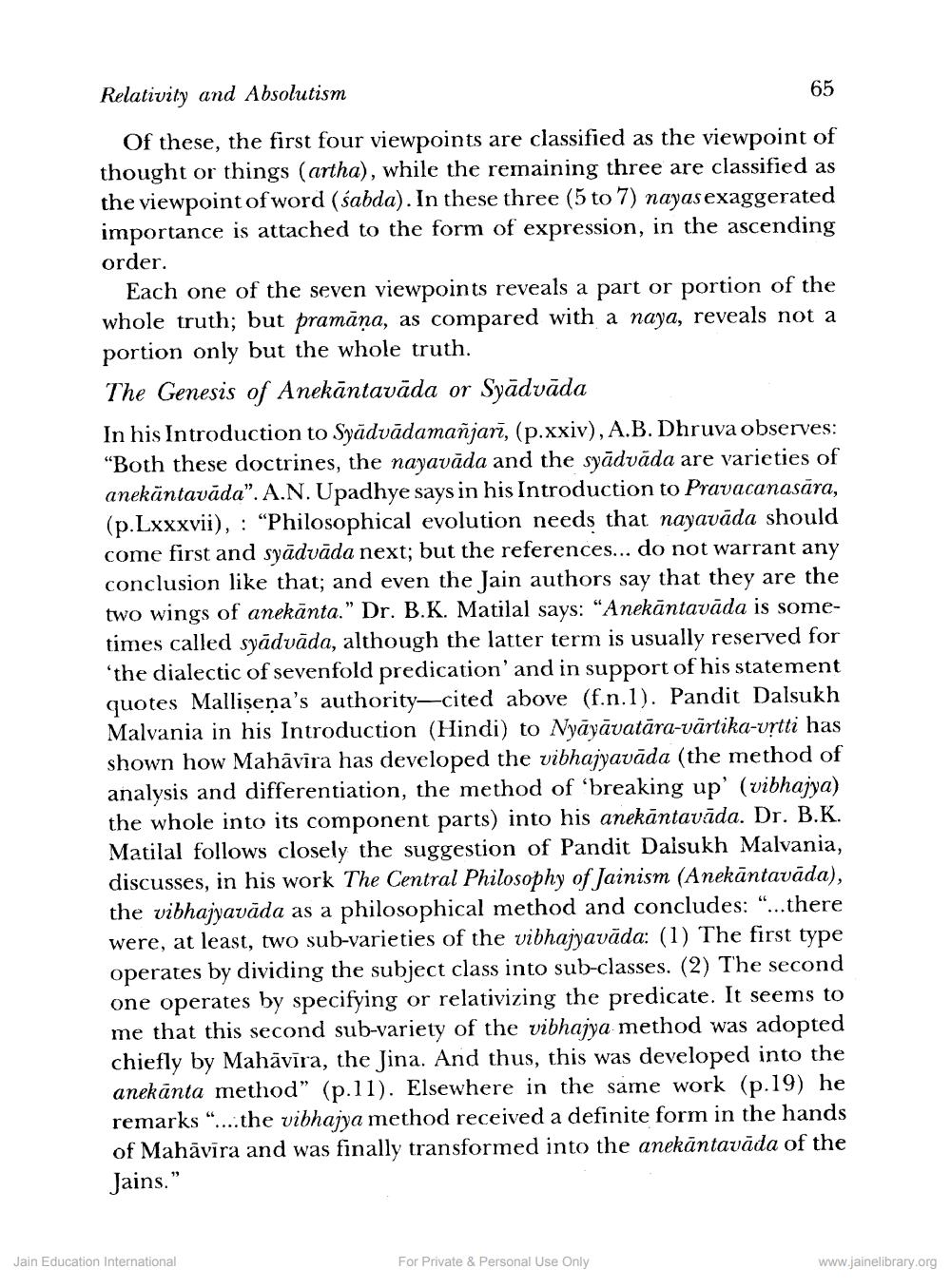________________
Relativity and Absolutism
65
Of these, the first four viewpoints are classified as the viewpoint of thought or things (artha), while the remaining three are classified as the viewpoint of word (śabda). In these three (5 to 7) nayas exaggerated importance is attached to the form of expression, in the ascending order.
Each one of the seven viewpoints reveals a part or portion of the whole truth; but pramāna, as compared with a naya, reveals not a portion only but the whole truth. The Genesis of Anekāntavāda or Syādvāda In his Introduction to Syādvādamañjarī, (p.xxiv), A.B. Dhruva observes: “Both these doctrines, the nayavāda and the syādváda are varieties of anekäntavāda". A.N. Upadhye says in his Introduction to Pravacanasāra, (p.Lxxxvii), : "Philosophical evolution needs that nayavāda should come first and syādvāda next; but the references... do not warrant any conclusion like that; and even the Jain authors say that they are the two wings of anekānta.” Dr. B.K. Matilal says: “Anekāntavāda is sometimes called syādvāda, although the latter term is usually reserved for 'the dialectic of sevenfold predication' and in support of his statement quotes Mallisena's authority—cited above (f.n.1). Pandit Dalsukh Malvania in his Introduction (Hindi) to Nyāyāvatāra-vārtika-vrtti has shown how Mahavira has developed the vibhajyavāda (the method of analysis and differentiation, the method of 'breaking up' (vibhaja) the whole into its component parts) into his anekāntavāda. Dr. B.K. Matilal follows closely the suggestion of Pandit Dalsukh Malvania, discusses, in his work The Central Philosophy of Jainism (Anekāntavāda), the vibhajyavāda as a philosophical method and concludes: “...there were, at least, two sub-varieties of the vibhajyavāda: (1) The first type operates by dividing the subject class into sub-classes. (2) The second one operates by specifying or relativizing the predicate. It seems to me that this second sub-variety of the vibhajya method was adopted chiefly by Mahāvīra, the Jina. And thus, this was developed into the anekānta method” (p.11). Elsewhere in the same work (p.19) he remarks ....the vibhajya method received a definite form in the hands of Mahāvīra and was finally transformed into the anekāntavāda of the
Jains."
Jain Education International
For Private & Personal Use Only
www.jainelibrary.org




